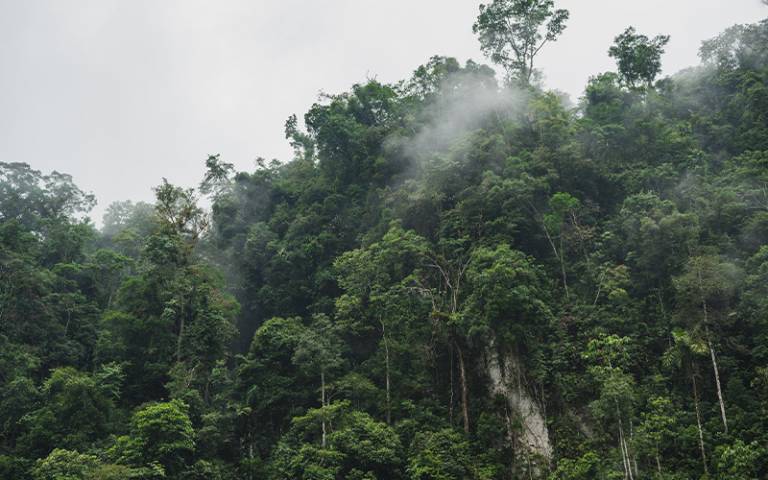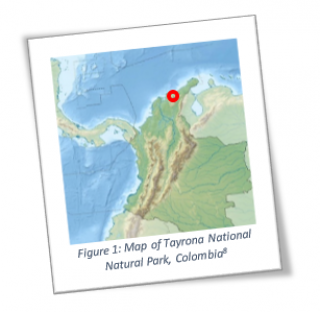
Written by Vivek Parekh
Prosperity for all - what's not to like?
Ecotourism is responsible travel to natural areas intended to produce benefits such as conserving the environment, sustaining local people’s wellbeing and increases education [1]. Western conservationist movements and a growing demand for nature-based tourism has led to a rise in ecotourists by approximately 10% annually since the turn of the century [2].
Beneath the surface...
Unfortunately, visitors are often oblivious to the historical origins of these areas. Conflict has occurred when areas of interest, such as wildlife and conservation parks, overlap with indigenous and local community settlements [3]. This has led to cases of ‘green grabbing’ which is the transfer of ownership from local communities to either the government or private sector under the banner of environmentalism [4]. In some cases, ecotourism directly contradicts one of its main objectives - to sustain the wellbeing of local people.
Case Study: Tayrona National Park, Colombia
Colombia’s struggle with land appropriation has been well reported in recent decades with violent paramilitary presence, illegal crop production and high-level corruption [5]. Until now, green grabbing is yet to face the same scrutiny.

Tayrona National Natural Park lies on the Caribbean coast of Colombia (Figure 1) spanning over 15,000 hectares and was home to numerous local communities, many of whom worked as peasants, fishermen and provided tourist services through local organisations [5]. The park is now one of the country’s most protected areas following a large government strategy of touristification and militarisation. This aimed to eliminate the prominent illegal production of marijuana and coca and resulted in conflict hotspots turning into ecotourist destinations [5].
Approximately 90% of the park is now privately-owned, with a significant proportion owned by members of the local elite who acquired properties through illicit expansion and corruption favours. This has occurred despite the park’s public status deeming acquisition illegal unless occupiers possess royal decrees dating back to the Spanish colonial period [5].
The concession of ecotourist services by the state to a private alliance in 2005 enabled land appropriation to be sold as the ‘protection of nature’, legitimising actions to restructure resource access, use and control against local community members [5,6]. The restructuring saw those who relied on tourism as the main means of subsistence being criminalised, relocated and expelled due to pressure on resources [5]. Those fortunate to remain employed following the concession saw earnings significantly cut and faced constant threats of eviction [5]. So, does the growth of ecotourism actually sustain the wellbeing of local communities?
A need to greater community integration
The current model used by the ecotourism industry in Tayrona National Natural Park fails to incorporate local communities who have inhabited the area for decades, and instead frames community members as illegal occupants and their actions as threats to conservation. Whereas, if they were to integrate community participation through local ownership and knowledge transfer, the ecotourism industry could create a replicable model to responsibly deliver their objectives.
References
The International Ecotourism Society. What is ecotourism [Online]. The International Ecotourism Society: Washington DC; 2015 [Accessed 11 February 2020]. Available from: https://ecotourism.org/what-is-ecotourism/
Greener Ideal. The Rise of the Ecotourist [Online]. Greener Ideal: Ontario; 2012 [Accessed 14 February 2020]. Available from: https://greenerideal.com/news/1001-rise-of-the-eco-tourist/
Bluwstein J. Creating ecotourism territories: Environmentalities in Tanzania’s community-based conservation. Geoforum. 2017 Jul 1;83:101-13.Find source
Fairhead J, Leach M, Scoones I. Green grabbing: a new appropriation of nature?. Journal of peasant studies. 2012 Apr 1;39(2):237-61.
Ojeda D. Green pretexts: Ecotourism, neoliberal conservation and land grabbing in Tayrona National Natural Park, Colombia. Journal of Peasant Studies. 2012 Apr 1;39(2):357-75.
Leach M. The dark side of the green economy: 'Green grabbing' [Online]. Al Jazeera: Sussex; 2012 [Accessed 11 February 2020]. Available from: https://www.aljazeera.com/indepth/opinion/2012/06/201261885431273708.html
Benson A. An Overview of Ecotourism in Colombia [Online]. Ecobnb: 2019 [Accessed 18 February 2020]. Available from: https://ecobnb.com/blog/2019/02/colombia-ecotourism-overview/
Wikipedia contributors. Tayrona National Natural Park [Online]. Wikipedia, The Free Encyclopedia; 2019 [Accessed 16 February 2020]. Available from: https://en.wikipedia.org/w/index.php?title=Tayrona_National_Natural_Park&oldid=926058148
Image credit
Conscious Design, Unsplash
 Close
Close

